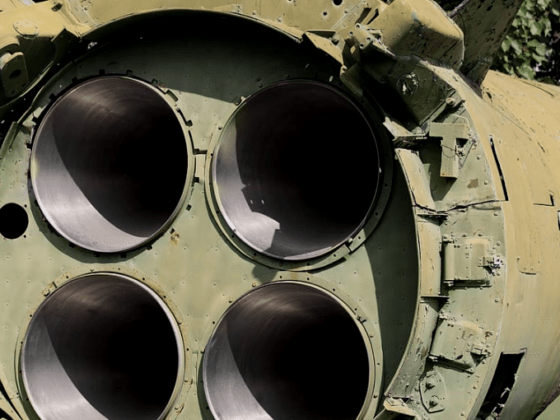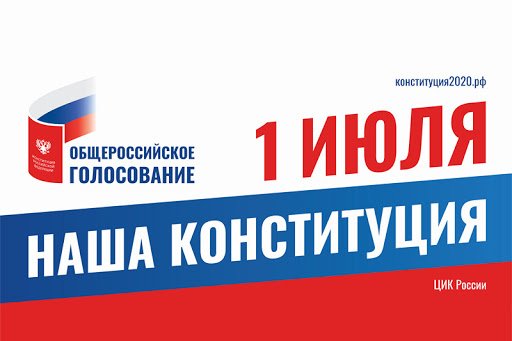(PONARS Eurasia Policy Memo) Theories of soft power inspired by political scientist Joseph Nye often rely on two problematic assumptions: that soft power accrues only to countries with liberal systems, and that the United States is the yardstick for measuring its impact. The assumption that non-liberal countries cannot develop soft power that would attract audiences abroad limits our ability to apprehend the way illiberal politics and politicians gain momentum at home and abroad. Moreover, while the United States may be unique in the sheer scale of the soft power it exerts around the world, this makes it an exception rather than a benchmark; looking through a U.S.-centric lens obscures the niche forms of soft power that other countries project.
Russia challenges both of the above-mentioned assumptions. It deploys at least two forms of soft power: an ideological one, which can be expressed under the label of illiberalism and/or use of the Soviet Union as a legacy, and a niche one, related to the country’s own cultural production. To illustrate that double soft power, this memo looks at the reception of Russian culture in China. In 2015 Pew Center surveys, Chinese see Russia positively at 51 percent (negatively at 37 percent), which is one of the higher results for Moscow outside the post-Soviet realm, but not so high given the official warming between the two countries. While Chinese audiences have been globalizing their cultural consumption since the 1980s, Russia continues to occupy several niches of potential soft power: positive memories of the Sino-Soviet friendship, admiration for Putin’s assertive foreign policy and rejection Western liberal influence, and an increasing popularity of Russian musical and cinematographic productions. In fact, even Nye himself admitted that Hitler, Stalin, and Mao possessed a “great deal of soft power” in the eyes of their supporters, but he classified such soft power as being wielded for ill.
Chinese Nationalists’ and the Communist Party’s Admiration of Putin’s Russia
Thirty years after the collapse of the Soviet Union, the Chinese Communist Party (CCP) and Chinese nationalists are still traumatized by the disappearance of the former USSR, interpreted as a potential geopolitical tragedy that China’s Party-State should avoid. Inside the CCP, many consider Russian nationalism promoted by the Kremlin under Vladimir Putin to be something the CCP should learn from in order to preserve its own rule. For example, when President Xi Jinping came to power in 2013, he famously stated that “nobody was man enough to stand up and resist” the collapse of the USSR in 1991. Xi argues that the reason the Soviet Union collapsed is that the “ideals and beliefs” among Communist Party of Soviet Union (CPSU) members were shaken, so they engaged in “historical nihilism” by dismissing Lenin, Stalin, and Soviet historical achievements in general—an indirect way of asserting that he will not let such self-denial emerge in China.
Following that reading, the mouthpiece of the CCP, People’s Daily, regularly holds up Vladimir Putin as an example of a Russian patriot, working hard to promote his country’s own culture, history, and military strength amid what is described as an invasion of Western liberal thoughts. In the words of Dr. Li Ling of the Chinese Academy of Social Science (a Chinese policy think tank associated with the PRC State Council), the CCP should learn from Putin’s administration in promoting “militaristic patriotic education,” citizens’ willingness to sacrifice for their nation, and pride of ones’ national identity, so that China as a whole would be in a better position to carry out Xi’s goal of the “rejuvenation of the Chinese nation.”
Outside the CCP itself, a broader community of Chinese nationalistic elites and citizens celebrate Russia’s revival under Putin on the international scene as an example of the failure of the liberal West. China, since the First Opium War (1840), has long suffered geopolitical, cultural, and economic humiliation by the West and Japan, so Russia’s reassertion paves the way for Chinese nationalists’ revanchism. Such a perception was expressed in the Chinese popular, nationalistic webcomic, “Year Hare Affair: The Chronicle of the Rabbits.” Each 15-minute episode discusses China’s international relations, history, wars, and conflicts. With almost 90 million hits in 2017, the cartoon, partly funded by the Political Work Department of the People’s Liberation Army (PLA), has been able to reach a broad audience of Chinese citizens with a nationalist sensibility.
In the cartoon, each country is portrayed by an animal. Both the USSR and today’s Russia are very classically represented by a brown bear that is fiercely violent when provoked but could be warm and honest. While Season II details the Sino-Soviet Split, the last episode shows a Chinese hare telling the Russian bear that the latter has been his “teacher, best friend, and enemy” while other hares begin singing their “teacher’s” favorite song: “Katyusha.” This song embodies the Sino-Russian friendship beyond ideological ruptures. For instance, during the May 9, 2015, parade on Red Square for the 70th anniversary of Victory Day, PLA participants not only marched when “Katyusha” was playing in the background, but they also learned to sing the song in Russian in order to show respect to Soviet veterans. The PLA honor guards who returned to Moscow for the belated 2020 Victory Day parade also sang the famous Russian song, along with “Moscow Nights.”
In the minds of Mainland Chinese who still remember the days of camaraderie between Moscow and Beijing, the song “Katyusha” is one of the major representations of both the former USSR and Russia. In this sense, despite the fact that the USSR has long collapsed and Communism is no longer the main ideology driving Sino-Russian friendship, the Sino-Soviet/Russian ideological affinity can still be felt through contemporary Chinese nationalistic audiences’ knowledge of Russian and Soviet military songs. Their vision, as encapsulated in “The Chronicle of the Rabbits,” is of Russia as an umbrageous but respected neighbor and teacher whose assertiveness toward the hegemonic West should be emulated by China in the face of Western hostility.
Russian Cultural Soft Power: From Cheburashka to Masha and the Bear
While Soviet and Russian soft power in China maintains strong ideological roots, not every aspect of it carries political messages. For example, contemporary Russian singers like Vitaly Grachev (aka Vitas) have had their shares of the Chinese market. In 2006, Vitas’ click-through rate on Baidu even briefly surpassed those of Michael Jackson, ranking fourth on the Chinese search engine. From 2006 to 2012, Vitas’ albums were so popular in China that he was invited to perform in China’s annual Lunar New Year Galas in the 2008 Beijing Olympics, at the annual Qingdao Beer Festival, and so forth. Apart from singing older songs like “Katyusha” and “Moscow Nights,” Vitas also sang classic Chinese folk songs with Russian lyrics using his famous high. During the one-year anniversary of the 2008 Sichuan Earthquake, Vitas performed his song “The Star.” In addition to singing, Vitas played the role of a Comintern agent in the 2011 Chinese propaganda film “The Founding of a Party,” which commemorated the 90th anniversary of the founding of the CCP. Although Vitas has no direct connection to Russian political influence in China, due to Chinese audiences’ perceptions and the history of Sino-Soviet interactions, the Russian singer arguably profited from such vestiges of ideological ties.
Similar to music, Russian cinematic influence in China began with shared Communist ideology. The USSR arguably helped set the standard for filmmaking in the PRC during the 1950s, and Soviet war movies occupied a special place in the PRC’s nascent box office. One of the representatives of these films was Zoya (1944), telling the story of a real-life female partisan, Zoya A. Kosmodemyanskaya, who infiltrated enemy lines and made the ultimate sacrifice for her motherland fighting the Nazis. The Chinese online encyclopedia Baidu Baike states that Zoya represents the very kind of patriotism and heroism that Chinese people need in order to construct a more powerful “Socialism with Chinese Characteristics.”
When Beijing implemented the Reform and Opening-Up policy in 1978, American, Japanese, Taiwanese, Hong Kong, and Korean music and movies gradually replaced Soviet and Russian ones. Contemporary Russian films are not as popular as those of Hollywood, Bollywood, and Chinese production, but they still have their place in the Chinese box office. In fact, since the late 2000s, Russian films have even made a comeback. War films depicting the Great Patriotic War remain popular. For instance, Stalingrad (2013) earned 69th place, which ranked above the Chinese domestic, historical, war film Saving General Yang (75th) and the 2012 remake of Les Misérables (74th), but below Hollywood blockbusters like Star Trek Into Darkness, Man of Steel, and Pacific Rim.
The 2017 Russian film Going Vertical, which depicted the Soviet basketball team’s victory over the United States in the 1972 Munich Olympics, became the highest-grossing Russian film in the Chinese box office in 2019, making $85 million RMB ($12.3 million) compared to Stalingrad’s 71.9 million RMB. In fact, 95 percent of Going Vertical’s gross box office outside of Russia came from China. The Chinese social network Douban gave Going Vertical a rating of 8.2 out of 10. As the most influential film and TV reviewer website, Douban’s rating (from 1 being the worst, to 10 being the best) significantly influences the success or failure of newly released films in China. Ultimately, the Chinese box office has become a market that Russian producers cannot ignore, especially for action films.
[See the PDF version of this memo for examples of Chinese flyers for the Russian Film Going Vertical (2019) or here (Zhihu) and here (Zhihu).]
In addition to war and sports films, Soviet and Russian cartoons with no ideological roots are making their way into the Chinese market too. For example, representatives from the Russian state-owned animation studio Soyuzmultfilm are currently in discussion with the Chinese state-owned China Central Television (CCTV) and Chinese conglomerate Alibaba to remake the classic 1972 Soviet cartoon Cheburashka. The president of Soyuzmultfilm Yuliana Slashcheva is considering adding a Chinese Panda character alongside Cheburashka and Gena the Crocodile, the original two main characters. In fact, a Chinese version of Cheburashka’s theme song, “Blue Wagon,” has long existed, and the original episodes of Cheburashka could be found on the Chinese video-sharing site Bilibili. The 1974 episode (“Shapokliak”) of Cheburashka earned 9.4 out of 10 on Douban. In addition to Cheburashka, the 1969 Soviet cartoon Well, Just You Wait! (Nu, pogodi!) can be watched for free on CCTV. Douban gives the show a rating of 8.8 out of 10.
While older cartoons have their share of the Chinese market, recent innovations like Masha and the Bear have also captured some segments of the Chinese market, although only recently, from January 2020. Douban gave Masha and the Bear an impressive rating of 9.5 out of 10. Similar to Cheburashka, Soyuzmultfilm and the Moscow-based Animaccord Animation Studio plans to cooperate with Chinese cartoon studios to add Chinese elements into Russian cartoons in order to further expand into the Chinese market. By March 2020, series I and II of Masha and the Bear have been streaming on the CCTV-14 children’s channel. The main character Masha is now so popular that it became a meme on Douyin, the Chinese domestic version of TikTok.
[See the PDF version of this memo for examples of Masha and the Bear on Chinese Social Media or here (DCD App).]
In other words, Russian films and cartoons have their own share of the growing Chinese market, although they are unlikely to outcompete Hollywood and domestic production. In this sense, gone are the days when political ideology was the only driver behind Soviet and Russian films’ popularity in China. Although Russian action movies like Stalingrad and modernized versions of Soviet patriotic films will still have their place in China, they are not the only choice of foreign films for Chinese consumers. However, Russian cartoons like Cheburashka and Masha and the Bear, which are already successful, could become more popular by adding Chinese elements. In fact, by the end of 2019, 42 percent of the Russian film industry’s foreign earnings, and 40 percent of its overseas audience, came from China (followed by Mexico in 2nd place generating 5 percent). In other words, the Chinese audience has been Russian cinematography’s most loyal customer outside of Russia.
Conclusion
Russia is seen by the Chinese regime and by the most nationalistic segments of the Chinese population as a mirror of both what China wants to avoid—the Soviet Union’s collapse—and what it wants to become—a display of muscular revival à la Putin that challenges Western liberal ideology and hegemony. However, some Russian cultural products are also consumed in China without an ideological footprint, but even they benefit from some Chinese nostalgia for the Sino-Soviet friendship (visible, for instance, in the growth of Red Tourism). Ultimately, although contemporary Russian musical influence in China is becoming less political, Chinese perceptions of Russian musical and cinematographic culture remain deeply tied to the two countries’ shared ideological affinity.
This brief overview invites us to develop a more granular definition of soft power outreach. Russia’s ability to develop multiple ideological languages, as well as to promote cultural products abroad, give it the theoretical possibility to develop a niche soft power and ideological influence that is neither U.S.-centered nor liberalism-based. Yet, it remains to be seen if this cultural production can be transformed into effective soft power, that is if Russia’s cultural strengths do contribute to securing the country’s international status.
Marlene Laruelle is Research Professor, Director of the Institute for European, Russian and Eurasian Studies (IERES), Director of the Central Asia Program, and Co-director of PONARS Eurasia at the Elliott School of International Affairs, The George Washington University.
Wei (Josh) Luo is a Graduate Research Assistant at The George Washington University.
[PDF]
Homepage image credit Zhihu and Zhihu (the Chinese equivalent of Wikipedia).











